COSPAR ID 1985-063A Orbits completed 127 Apogee 321,100 m Launch date 29 July 1985 | SATCAT no. 15925 Period 1.5 hours Dates 29 Jul 1985 – 6 Aug 1985 Landing date 6 August 1985 | |
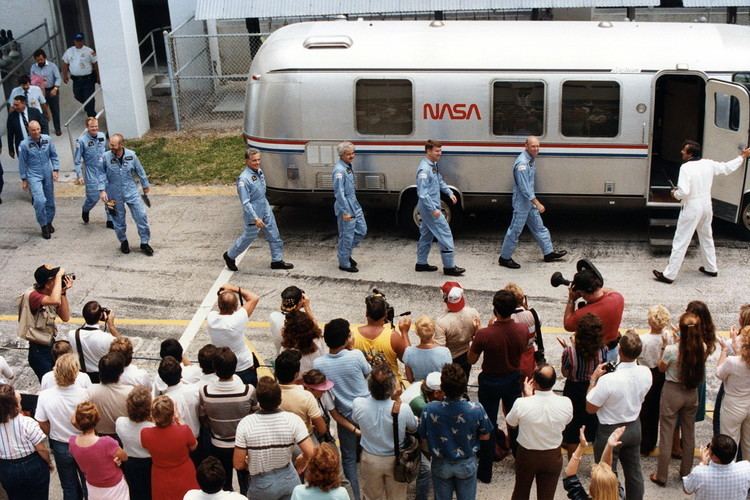 | ||
Mission type Astronomical observations Mission duration 7 days, 22 hours, 45 minutes, 26 seconds Distance travelled 5,284,350 kilometres (3,283,543 mi) Members C. Gordon Fullerton, Roy D. Bridges Jr. | ||
STS-51-F (also known as Spacelab 2) was the nineteenth flight of NASA's Space Shuttle program and the eighth flight of Space Shuttle Challenger. It launched from Kennedy Space Center, Florida, on July 29, 1985, and landed just under eight days later on August 6.
Contents
- Sts 51 f launch nbc news coverage
- Crew notes
- Launch
- Mission summary
- Landing
- Mission insignia
- Crew bios
- References

While STS-51-F's primary payload was the Spacelab 2 laboratory module, the payload that received the most publicity was the Carbonated Beverage Dispenser Evaluation, which was an experiment in which both Coca-Cola and Pepsi tried to make their carbonated drinks available to astronauts. A helium-cooled infrared telescope (IRT) was also flown on this mission, and while it did have some problems, it observed 60% of the galactic plane.
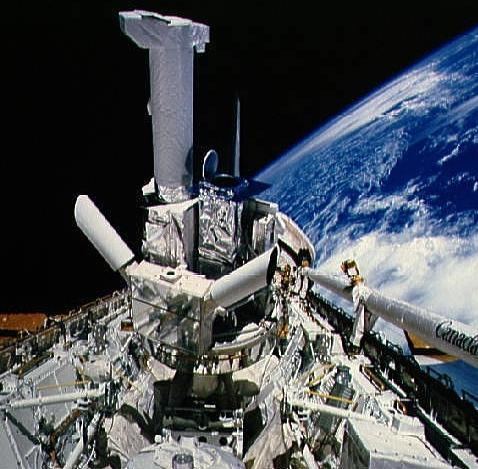
During launch the Challenger experienced multiple sensor failings in its Space Shuttle Main Engines (SSME) and had to perform an "Abort to Orbit" (ATO) emergency procedure. It is the only mission to have carried out an abort after launching. As a result of the ATO, the mission was carried out at a slightly lower orbital altitude.

Sts 51 f launch nbc news coverage
Crew notes
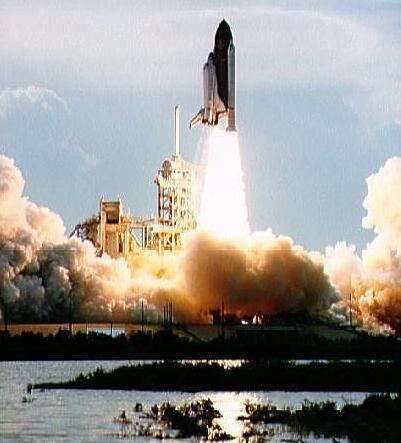
As with previous Spacelab missions, the crew was divided between two 12-hour shifts. Acton, Bridges and Henize made up the "Red Team" while Bartoe, England and Musgrave comprised the "Blue Team"; commander Fullerton could take either shift when needed. Challenger carried two EMUs in the event of an emergency spacewalk, which would have been performed by England and Musgrave.
Launch

STS-51-F's first launch attempt on July 12, 1985 was halted with the countdown at T−3 seconds after main engine ignition, when a malfunction of the number two Space Shuttle Main Engine (SSME) coolant valve caused the shutdown of all three main engines. Challenger launched successfully on its second attempt on July 29, 1985, at 17:00 EDT, after a delay of 1 hour 37 minutes due to a problem with the table maintenance block update uplink.
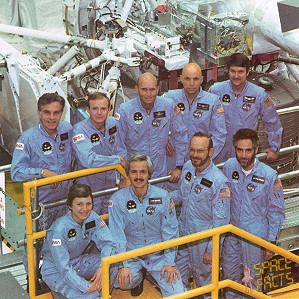
At 3 minutes 31 seconds into the ascent, one of the central engine's two high-pressure fuel turbopump turbine discharge temperature sensors failed. 2 minutes and 12 seconds later, the second sensor failed, causing the shutdown of the central engine. This was the only in-flight main-engine failure of the Shuttle program. Approximately 8 minutes into the flight, one of the same temperature sensors in the right engine failed, and the remaining right-engine temperature sensor displayed readings near the redline for engine shutdown. Booster Systems Engineer Jenny M. Howard acted quickly to command the crew to inhibit any further automatic SSME shutdowns based on readings from the remaining sensors, preventing the potential shutdown of a second engine and a possible abort mode that may have resulted in the loss of the vehicle and crew.
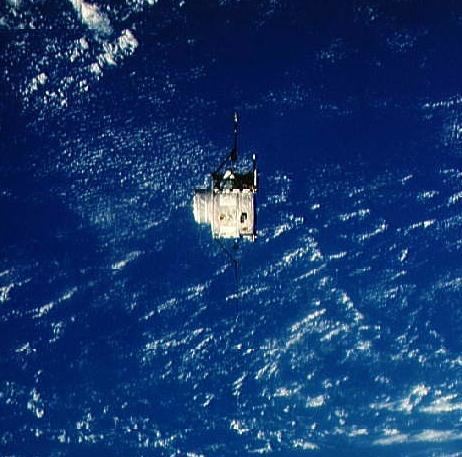
The failed SSME resulted in an Abort to Orbit (ATO) trajectory, whereby the shuttle achieved a lower-than-planned orbital altitude.
Mission summary
STS-51-F's primary payload was the laboratory module Spacelab 2. A special part of the modular Spacelab system, the "igloo", which was located at head of a three-pallet train, provided on-site support to instruments mounted on pallets. The main mission objective was to verify performance of Spacelab systems, determine the interface capability of the orbiter, and measure the environment created by the spacecraft. Experiments covered life sciences, plasma physics, astronomy, high-energy astrophysics, solar physics, atmospheric physics and technology research. Despite mission replanning necessitated by Challenger's abort to orbit trajectory, the Spacelab mission was declared a success.
The flight marked the first time the ESA Instrument Pointing System (IPS) was tested in orbit. This unique pointing instrument was designed with an accuracy of one arcsecond. Initially, some problems were experienced when it was commanded to track the Sun, but a series of software fixes were made and the problem was corrected. In addition, Tony England became the second amateur radio operator to transmit from space during the mission.
The Spacelab Infrared Telescope (IRT) was also flown on the mission. The IRT was a 15.2 cm aperture helium-cooled infrared telescope, observing light between wavelengths of 1.7 to 118 μm. The experiment experienced some problems, it was thought heat emissions from the Shuttle corrupting long-wavelength data, but it still returned useful astronomical data. Another problem was that a piece of mylar insulation broke loose and floated in the line-of-sight of the telescope. IRT collected infrared data on 60% of the galactic plane. (see also List of largest infrared telescopes) A later space mission that experienced a stray light problem from debris was Gaia astrometry spacecraft launch in 2013 by the ESA—the source of the stray light was later identified as the fibers of the sunshield, protruding beyond the edges of the shield.
The Plasma Diagnostics Package (PDP), which had been previously flown on STS-3, made its return on the mission, and was part of a set of plasma physics experiments designed to study the Earth's ionosphere. During the third day of the mission, it was grappled out of the payload bay by the Remote Manipulator System and released for six hours. During this time, Challenger maneuvered around the PDP as part of a targeted proximity operations exercise. The PDP was successfully grappled by the RMS and returned to the payload bay at the beginning of the fourth day of the mission.
In a heavily-publicized marketing experiment, astronauts aboard STS-51-F drank carbonated beverages from specially-designed cans provided by competitors Coca-Cola and Pepsi. Post-flight, the astronauts revealed that they preferred Tang, in part because it could be mixed on-orbit with existing chilled-water supplies, whereas there was no dedicated refrigeration equipment on board to chill the cans, which also fizzed excessively in microgravity.
In an intriguing experiment, during a 1985 launch, thruster rockets were fired at a point over Tasmania and also above Boston to create two "holes" – plasma depletion regions – in the ionosphere. A worldwide group of geophysicists collaborated with the observations made from Spacelab 2.
Landing
Challenger landed at Edwards Air Force Base, California, on August 6, 1985, at 12:45:26 p.m. PDT. Its rollout distance was 8,569 feet (2,612 m). The mission had been extended by 17 orbits for additional payload activities due to the Abort to Orbit. The orbiter arrived back at Kennedy Space Center on August 11, 1985.
Mission insignia
The mission insignia was designed by Houston artist Skip Bradley. Space Shuttle Challenger is depicted ascending toward the heavens in search of new knowledge in the field of solar and stellar astronomy, with its Spacelab 2 payload. The constellations Leo and Orion are shown in the positions they were in relative to the Sun during the flight. The nineteen stars indicate that the mission is the 19th shuttle flight.
Crew bios
C. Gordon Fullerton died on August 21, 2013, aged 76.
Karl Gordon Henize died October 5, 1993 on an expedition to Mount Everest studying the effects of radiation from space. (age 66)
